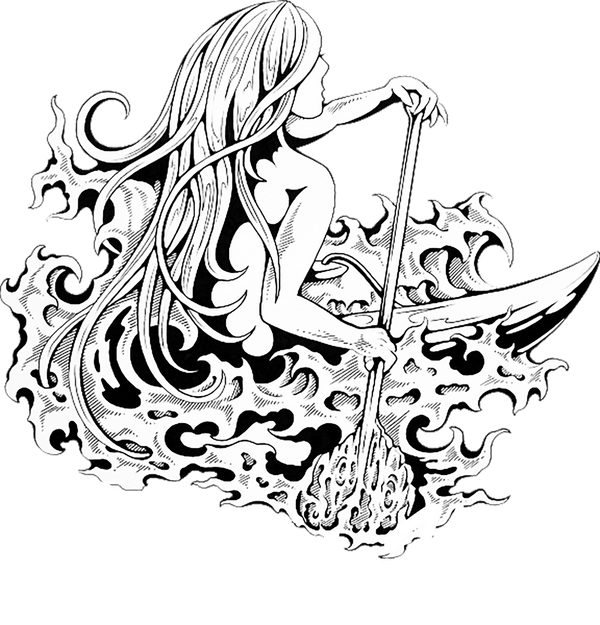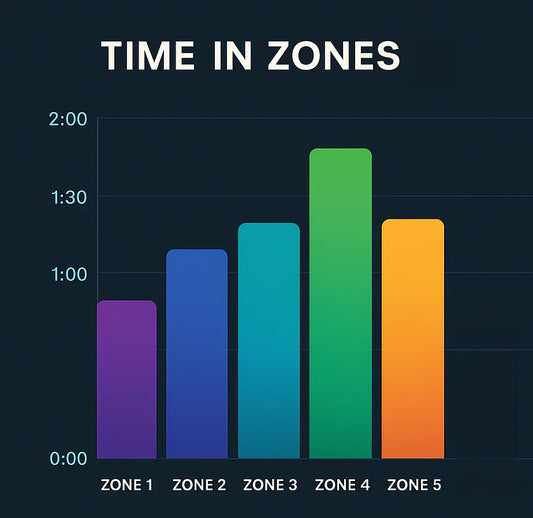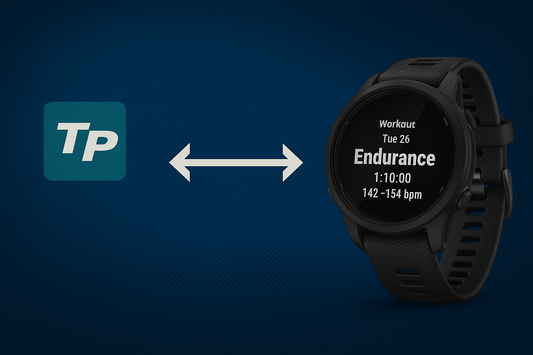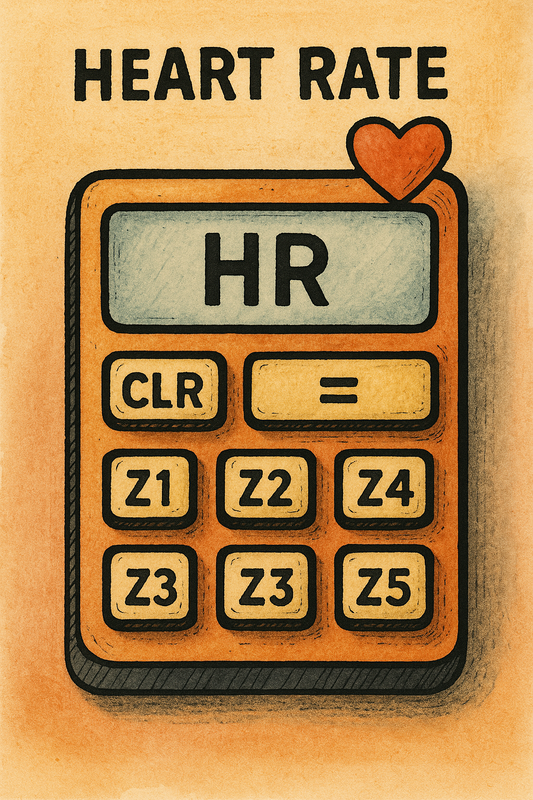One of the most powerful tools you can use to guide your paddling is training zones. Zones allow us to match effort with purpose, so each session builds the right system—whether that’s long-distance endurance, sustainable race pace, or short bursts of power.
For outrigger canoe paddlers, we can adapt Joe Friel’s cycling zones (from The Triathlete’s Training Bible, 5th Edition) as a proven way to structure training around heart rate.
Why We Use Friel’s Training Zones in Paddling
Paddling isn’t cycling, but the physiology behind training intensity is the same. What matters is how we measure and apply effort. Friel’s system works well for paddlers because:
- It’s evidence-based: The zones are grounded in decades of endurance training science.
- It’s practical: You don’t need a lab test—just a heart rate monitor and a paddle.
- It’s progressive: As you gain fitness, your zones shift upward, showing measurable improvement.
In short, Friel’s zones give outrigger paddlers a clear framework to keep training structured and avoid the “gray zone” of always paddling at the same moderate effort.
What Is LTHR?
Before we set training zones, it’s important to understand the anchor point: LTHR, or Lactate Threshold Heart Rate.
This is the highest heart rate you can sustain for about one hour without fatiguing so much that your pace drops. At this point, lactate (a byproduct of carbohydrate metabolism) is accumulating in your blood, but your body can still clear it fast enough to keep you going.
- It is not the same as maximum heart rate.
- It reflects your endurance fitness more accurately than any formula.
- Training at or around LTHR helps you raise your “ceiling,” so you can paddle harder for longer before fatigue sets in.
This is why Joe Friel uses LTHR as the foundation for all heart rate zones—it’s a field-testable, individualized number that adapts as your fitness improves.
Why LTHR Instead of Max Heart Rate?
- Individual specificity: Two paddlers with the same max HR can have very different sustainable race efforts. LTHR captures your sustainable intensity.
- Stability: Max HR is largely genetic and doesn’t change much; LTHR moves with your fitness, so zones stay relevant across the season.
- Practical testing: A 60-minute time trial (using the last 30 minutes for HR) is safer and more repeatable than trying to hit a true max.
The Field Test: 60-Minute Paddling Time Trial
To find your LTHR, use a paddling-based test:
- Warm up for 15–20 minutes at an easy paddle.
- Start a 60-minute all-out paddle (OC1, OC2, or erg if water conditions aren’t steady).
- Settle into the hardest effort you can sustain evenly for the full hour.
- Record your average heart rate for the full 60 minutes.
That number is your LTHR—the anchor for your zones.
How to Choose your Time Trial Course
In SoCal Va'a Training Plans you will see a time trial as the first workout, but also repeated every recover and test week. When creating your time trial course try to do the following
- A length of 60 minutes +/- 10min
- Repeatable - landmarks you are turning on are reliable and always there
- Consistent Conditions - ideally large tide swings and significant swell don't factor into your times
- Race Simulation - typically races include a up wind, side wind, downwind, and harbor finish. If that sounds like your typical race, do your best to mimic those legs.
Friel’s Heart Rate Training Zones for Paddling
Here are the adapted heart rate zones, based on your LTHR:
- Zone 1 (Active Recovery): < 78% of LTHR
- Zone 2 (Endurance): 78–86% of LTHR
- Zone 3 (Tempo): 87–93% of LTHR
- Zone 4 (Threshold): 94–99% of LTHR
- Zone 5a (SuperThreshold): 100–102% of LTHR
- Zone 5b (VO₂max): > 102% of LTHR
- Zone 5c (Anaerobic Capacity): ≥ Max effort – HR not applicable
Each zone connects directly to a training purpose for outrigger paddling:
- Zone 1: Recovery paddles, technique drills.
- Zone 2: Long-distance aerobic base, steady state sessions.
- Zone 3: Tempo pieces, sustainable surf sessions.
- Zone 4: Race-pace intervals, 5–10 min repeats.
- Zone 5a–c: Short bursts for top-end speed, breakaways, and surf-chasing.
Training Zone Chart for Outrigger Canoe Paddling
| Zone | Purpose | % of LTHR | Cardio Time to Exhaustion |
|---|---|---|---|
| Zone 1 (Active Recovery) | Easy paddling, technique drills, recovery | < 78% | All day |
| Zone 2 (Endurance) | Long base paddles, steady sessions | 78–86% | 3–8 hours |
| Zone 3 (Tempo) | Moderate effort, sustained surfing, tempo work | 87–93% | 2–3 hours |
| Zone 4 (Threshold) | Race pace, 5–10 min intervals | 94–99% | 1–2 hours |
| Zone 5a (SuperThreshold) | Just above threshold, short race surges | 100–102% | 8–30 minutes |
| Zone 5b (VO₂max) | Hard efforts, max aerobic intervals | > 102% | 1–5 minutes |
| Zone 5c (Anaerobic Capacity) | Sprints, breakaways, surf-chasing | Max effort – HR not applicable | 5–30 seconds |
Example: Setting Zones with an LTHR of 165 bpm
Let’s say your 60-minute paddling test gave you an average HR of 165 bpm for the last 30 minutes. Here’s how your zones would break down:
- Zone 1: < 129 bpm
- Zone 2: 129–142 bpm
- Zone 3: 143–153 bpm
- Zone 4: 155–163 bpm
- Zone 5a: 165–168 bpm
- Zone 5b: > 168 bpm
- Zone 5c: Max effort – HR not applicable
One Last Thing: High Intensity, HR, and Cardiac Lag
Why Heart Rate Lags (and What It Means for Paddlers)
Heart rate is a valuable tool, but it isn’t instant. When you change intensity—whether that’s digging into a sprint, catching a wave, or settling back into recovery—your heart doesn’t immediately respond. Instead, it takes 15–60 seconds for your cardiovascular system to “catch up” to the new demand. This delay is called cardiac lag.
Here’s why it happens:
- Oxygen demand vs. supply: Your muscles instantly need more oxygen when you increase effort, but your heart rate increases more gradually to deliver that oxygen.
- Hormonal response: Adrenaline and other signals drive heart rate upward, but those signals take time to circulate.
- Stroke efficiency: In short bursts, muscles generate force anaerobically (without oxygen), so your heart rate doesn’t reflect the true effort until later.
For outrigger paddlers, this has some important implications:
- Short intervals (10–60 sec) aren’t accurately measured by HR. By the time your HR climbs, the piece may already be over.
- Surf and sprint efforts rely more on feel and power. In these moments, use perceived exertion, stroke rate, or power (if on an erg) as your guide.
- HR zones work best for steady efforts. Zones 2–4 are most reliable in long base paddles, tempo pieces, and threshold intervals that last several minutes.
- Recovery readings can be misleading. After a sprint, your HR may stay elevated even though your muscles feel recovered. This is normal—the lag works in both directions.
Bottom line: Heart rate zones are a fantastic framework for aerobic training, but they’re not the whole picture. For short bursts and race-like efforts, blend HR with perceived exertion and technique cues to train effectively.
Takeaway
For outrigger canoe paddlers, training zones are the bridge between effort and adaptation. By anchoring zones to your LTHR, Joe Friel’s system gives us a reliable way to structure training, track progress, and balance hard and easy days.
Set your zones, trust them, and let them guide you—so every paddle has a purpose.









